VAPOUR COMPRESSION REFRIGERATION SYSTEM
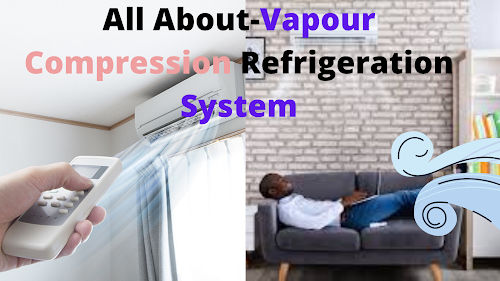 |
| All About-Vapour Compression Refrigeration System |
Do you know how does an air conditioner works?
To understand it clearly we need to understand four process which generally help us to generate cooling effect which is a part of vapour compression refrigeration cycle.
Vapour compression refrigeration system or vapour compression refrigeration system are the process which produces cooling effects to the particular zone which is been designed to get cooled.
This cycle is basically the foundation for air conditioner which gives us comfortable environment .
Now lets understand the four stages of refrigeration
FOUR STAGES OF REFRIGERATION
COMPRESSION
CONDENSATION
EXPANSION
EVAPORATION
This are the four main process through which we obtain our requirement of cooling.
COMPRESSION is a process which crunches the refrigerant or a gas in a container space to high pressure due which its temperature also increases.
To understand it more clearly lets take an example of piston and cylinder or holy gun which sucks in the water and when its piston is pressed against it, reducing the volume space of water gun or piston cylinder .It increases the pressure and temperature too and comes out through small nozzle .
Hope we are clear with it !!!!!!
CONDENSATION is a process which reduces the high temperature and maintain constant high pressure refrigerant which comes out of compression process.
Not clear???
Lets take an example
Condensation is basically a process which reject the heat , consider a hot glass of milk which need to be cool quickly so it is been put in saucer or a big diameter plate which increases its surface area of milk to surrounding air and hence cool the hot milk to cool milk quickly.
The same process is called condensation.
EXPANSION is process which is opposite to compression ,in compression we reduces the space to increase the pressure and temperature while in expansion we enhance the space to decreases its pressure and temperature .
To understand it more clearly lets take again take an example of piston cylinder or holi gun extracting the water when the piston is pulled up creating a negative pressure and hence space increases or volume increases which reduces the pressure and, temperature due more contact space similar to the milk example in saucer.
Hope we are clear with it.
EVAPORATION is a process which gives away its coolness and absorb the surround heat which changes it into vaporisation hence it is called evaporation.
To understand more clearly lets take an example of ice which when come in contact with the surrounding gives away it coolness and absorb the heat from the surrounding by changing its phase from solid ice to liquid.
FOUR MAIN COMPONENTS OF VAPOUR COMPRESSION REFRIGERATION SYSTEM
COMPRESSOR
CONDENSER
EXPANSION VALVE
EVAPORATOR
This are the four devices which perform the four process of refrigeration cycle and are responsible for producing cooling effect.
While understanding this process on compression, condensation ,expansion and evaporation we may come across a refrigerant.
REFRIGERANT , WHAT IS REFRIGERANT??????
So refrigerant is a heat absorbing or heat taking away medium which is used in vapour compression refrigeration cycle..
Which rejects heat at condenser and absorb heat at evaporator.
Basically it is a substantial gas which has a properties of heat addition or absorption and heat rejection or subtraction in a process which will give you desired effect.
While absorbing and rejecting the heat it has a property of changing phase from liquid to gas and vice versa.
Due to this properties of refrigerant , it is been used in the vapour compression refrigeration cycle.
Well next question which arise in your mind is understanding it more deeply
So to understand it more deeply lets move forward.
If you have heard about the R22 refrigerant phase out and R410A is used as alternative to it.
So to understand it we need to categorise the refrigerant, to understand it more clearly and in details.
CLASSIFICATION OF REFRIGERANT:
Chlorofluorocarbon carbon (CFC): CFC is a kind of refrigerant which contains chlorine int due which it depletes the ozone layer hence it was modified to (HCFC). R12 R 502.
Hydro chlorofluorocarbon carbon (HCFC): It contain less chlorine than (CFC) approx. 8%to 10%. But due to presence of chlorine in it ,it was modifies to (HFC).
R 22 R408A R409 A.
Hydro fluorocarbon (HFC): This is a refrigerant which is generally used which is chlorine free and safe for the environment. R 410 R 404 R 134A.
How Refrigerant Works?
Without refrigerant, there would be no air conditioning.
Air conditioners contain refrigerant inside copper coils. As refrigerant absorbs heat from indoor air, it transforms from a low-pressure gas to a high-pressure liquid.
Air conditioning components send the refrigerant outside where a fan blows hot air over the coils and exhausts it to the surrounding.
The refrigerant then cools down and changes into a low-pressure gas.
Another fan located inside the home blows air over the cool coils to distribute the resulting cold air throughout the building.
This is process is a cycle which keeps on cycling for desired cooling effect.And the process of absorption and rejection of heat keeps on going.
VAPOUR COMPRESSION REFRIGERATION SYSTEM
This is basically the process of vapour compression refrigeration cycle i.e compression , condensation , expansion and evaporation.
So as we know what this process of vapour compression refrigeration cycle and what are the refrigerant , it is quite easy to understand it with the above drawing.
So lets begin .
So the low pressure and temperature liquid refrigerant at evoporator absorbs the heat of the desired space or surrounding which is to be cooled and changes its phase to gas refrigerant.
This gas refrigerant is sucked by compressor creating a negative pressure or vacuum by pulling the piston back as discussed and the gas refrigerant fills the vacuum space.This low pressure and temperature gas refrigerant is been compressed to high pressure and high temperature by compressing the piston mechanism against the gas and reducing the volume space in the cylinder .
Due to this reduction in space and compression the gas refrigerant converts from low pressure and temperature to high pressure and high temperature refrigerant.
This gas is further passed to the condenser which rejects the heat of the gas refrigerant and keeps constant pressure.
Condensation is basically a cooling process of the refrigerant from high to low temperature by introducing it to open air or use water conjunction to provide faster reduction of the temperature.
Hence condensation converts it into low temperature but high pressure liquid refrigerant and supplies to expansion device.
So expansion device expands the low temperature and high pressure liquid refrigerant due which it reduces its pressure and as pressure reduces it also reduces its temperature.
Due to this pressure reduction , liquid refrigerant gets cool at a very faster rate.
This expanded low pressure liquid refrigerant is passed into the evaporator.
The low pressure liquid refrigerant after entering into the evaporator absorbs the surrounding heat by rejecting its cooling effect and converting it into low pressure and temperature gas refrigerant .
This is passed to compressor and the cycle continues…..
compression -condensation: The refrigerant is in high pressure and temperature gas state.
condensation -expansion :The refrigerant is in high pressure and low temperature liquid state.
Expansion -evaporation : The refrigerant is in low pressure and low temperature liquid state.
Evaporator – compressor : The refrigerant is in low pressure and low temperature gas state.
This is all how the vapour compression refrigeration cycle works……
As we know a that everything on the planet has a unit in the same way we may be curious to know how how do we measure the cooling effect or the so called refrigeration effect.
We all may heard that a particular air conditioner is 1 tonne
What does it means?
Is they are talking about the weight of it ??????
Answer is no!!!!!!!!!!
So to understand it lets dive it to something interesting…
What is one tonne of refrigeration?
well it is also called as Refrigeration effect.
Tonne of refrigeration is defined as the amount of cooling effect produced by uniform melting of a ton (1000 kg) of ice from 0° in 24 hrs.
So lets understand it deeply, basically they says that 1 tonne is the cooling effect which is generated by melting 1000 kg of ice which is obviously at 0° c which takes about 24 hrs to melt and gives the required cooling effect .
I hope we are clear about what is 1 tonne of AC ……
• Latent heat ( It is a heat required to change the phase of refrigerant) of ice is 335 kj/kg
• 1 tr =335 x 1000 kg in 24 hrs
• 335 x 1000/24 x 60=232.6 kj/min
• So the rate of heat absorption 1 tr=210 kj/min in actual, J/sec=watt.
• 1 tr= 3.5kw
well hope that we are clear with this topic of VAPOUR COMPRESSION REFRIGERATION SYSTEM 😇


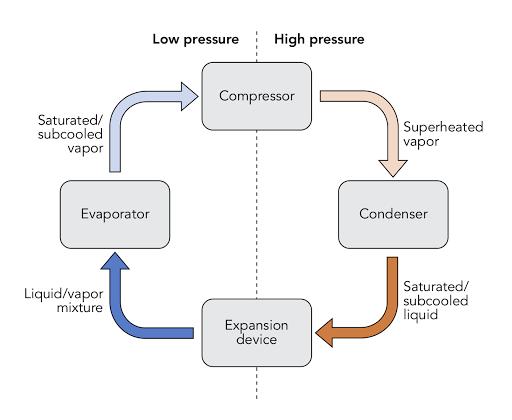
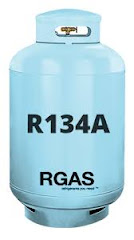
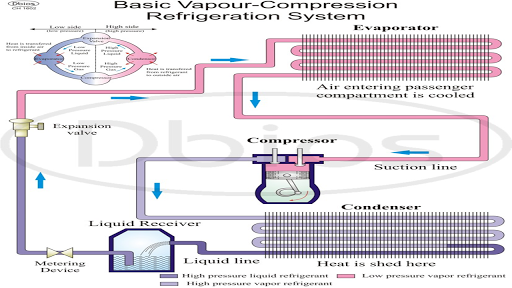
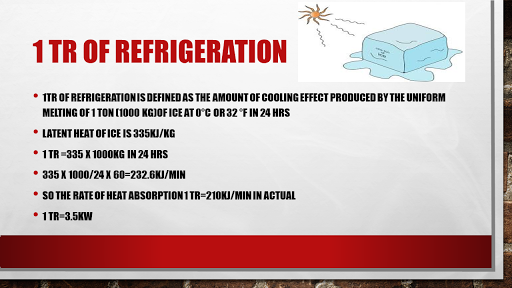




0 Comments